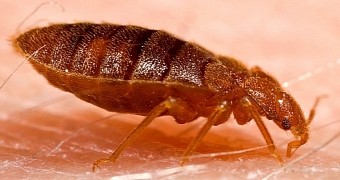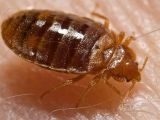In a recent paper in the journal Angewandte Chemie, scientist Regine Gries with the Simon Fraser University in Canada tells the tale of how, as part of a research project, she let bedbugs feast on her blood for several years in a row.
More precisely, the biologist says that, looking to find a way to rid the world of this pest, she let some 1,000 bedbugs eat her blood once a week for 5 years straight. The good news is that, by the looks of it, the experiments proved successful.
Thus, scientist Regine Gries and fellow researcher Gerhard Gries, who happens to be her husband, claim to have found a way to attract bedbugs into traps and capture them. Besides, the biologists say that baits and traps based on their work should become commercially available sometime next year.
How bedbugs don't make great or even tolerable companions
In their paper in the journal Angewandte Chemie, biologists Regine and Gerhard Gries explain that, as of recently, the common bedbug, whose official name is Cimex lectularius, has made a comeback in countries where it was believed to have been eradicated.
Although referred to as bedbugs, it appears the Cimex lectularious specimens like to set up camp not just in apartments or hotels. On the contrary, these creepy crawlers do not shy away from infecting stores, libraries, movie theaters and even buses as well.
This might not be such a problem if it were not for the fact that these bedbugs not only make people's skin itch and swell, but can also carry and transmit several pathogens that can make folks exposed to them really sick, Regine and Gerhard Gries detail.
Being eaten by bedbugs in the name of science
By letting bedbugs feast on her blood on a weekly basis for 5 years in a row, researcher Regine Gries managed to zoom in on several chemical compounds that, when combined, can help attract Cimex lectularius bedbugs into a trap and capture them.
Having identified these compounds, the researchers are working closely with Contech Enterprises Inc. to develop a trap that is both effective and affordable, Science Daily reports. As mentioned, the specialists expect that the first such traps will become commercially available in just a few months.
“This trap will help landlords, tenants, and pest-control professionals determine whether premises have a bedbug problem, so that they can treat it quickly. It will also be useful for monitoring the treatment's effectiveness,” biologist Regine Gries explained in a statement.
The researcher says that, while working on this research project, she suffered some 180,000 bedbug bites. The reason Regine Gries agreed to offer her blood to support the bedbug colony she and her husband experimented on was that, unlike other people, the biologist only develops a slight rash when exposed to such insects.
Interestingly enough, it appears that, until Contech Enterprises Inc. is done developing the planned bedbug traps, the researcher will continue to offer blood meals to such creatures. “I'm not too thrilled about this, but knowing how much this technology will benefit so many people, it's all worth it,” Regine Gries wished to stress.

 14 DAY TRIAL //
14 DAY TRIAL // 



